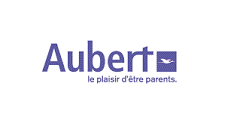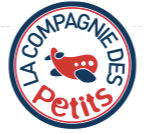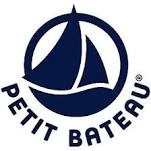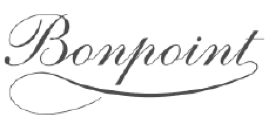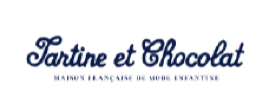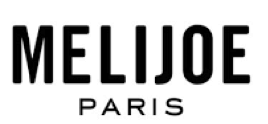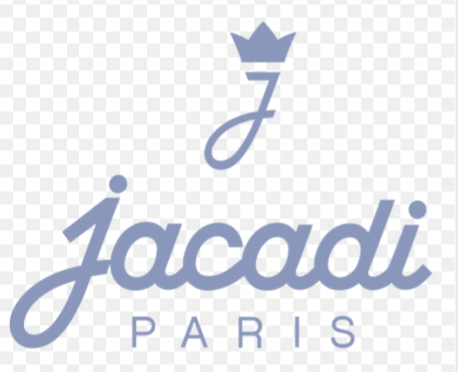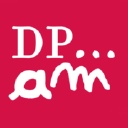Synthèse
The global babywear market, which caters mainly for children aged 0-36 months, proved resilient despite the challenges posed by the COVID-19 pandemic. Although the pandemic led to a drop in birth rates and affected retail sales due to store closures - in France, for example, sales at Petit Bateau fell by 20% - online sales grew and now account for a significant proportion of sales. In 2020, the birth rate in France continued its downward trajectory, coinciding with a drop in marriages due to pandemic-related restrictions. This demographic shift has a direct impact on the babywear market. Despite the general decline, the second-hand market for baby clothes has seen substantial growth, as consumers become increasingly receptive to the idea of circular fashion and sustainability.
Specialist babywear stores, which account for around 8% of the clothing retail trade in France, have adapted to changing consumer behavior, and more and more brands have integrated second-hand sales into their business model. Combined with the rise of online sales, these changes in market dynamics are shaping a competitive and adaptable industrial landscape for the future.
Trends in the French babywear market
In analyzing trends in the French babywear market, it should be noted that this segment is defined as clothing specifically designed for children aged 0-36 months. Despite a slight decline, market dynamics continue to be dictated by various factors that differentiate it from the broader apparel market.
In recent years, the French market has seen a shift in consumer behavior, with a growing demand for branded babywear, driven by rising disposable incomes and a fashion-forward parent demographic. This has led to an increase in the number of brands and specialty stores catering to this niche but steadily growing segment. However, the market is not without its challenges: the decline in France's birth rate, from around 12 to 13 births per 1,000 inhabitants from 11 to 12, is linked to the market's downward trend. This trend is likely to persist, with projections showing a continuing decline in market volume.
Changing consumer preferences have also had an impact on market structure, with a substantial increase in the market for second-hand baby clothes. This thrifty trend is fuelled not only by an eco-friendly mindset, but also by a wider acceptance and growing appetite for second-hand goods as emblems of value and sustainable living. What's more, with children growing up fast, parents are finding more value in the circular life cycle of second-hand baby clothes. E-commerce has left a significant footprint on distribution channels in the baby clothing market, with online sales accounting for a considerable percentage of market share. The convenience of home shopping was amplified in the context of the COVID-19 pandemic, which, unsurprisingly, led to an expansion in digital sales, even if overall sales slowed during the lock-in periods.
In terms of product offering, there is a diverse range of baby clothing, from one-pieces like bodysuits and rompers to separates like shirts and shorts. Layette sets continue to be a popular choice among parents, as they bring together essential clothing and accessories for their newborns. Given the sensitivity of young children's skin, the material of clothing is of paramount importance. Most parents tend to favor fabrics such as cotton and bamboo rayon for their softness and hypoallergenic properties. It is estimated that French parents spend on average between 50 and 60 euros a month on baby clothing, with spending fluctuating according to retailers' pricing strategies and seasonal discounts.
Key players in the babywear market
The babywear industry is packed with major brands and specialist companies, all vying to dress the smallest consumers with style and comfort. Without dwelling on specific sales figures, let's take a look at the notable contribution and market presence of each featured company.
- Okaidi, part of the IdKids group, stands out for its influence in the sector. Its mission is to offer universal, creative and respectful clothing to children all over the world, with sustainability as a central tenet of its philosophy.
- Petit Bateau is another key player with a rich heritage synonymous with high-quality, sustainable children's clothing. With over a century of expertise, this brand is appreciated for its classic designs and soft, reliable fabrics that meet the softness required for baby clothes.
- Kaibi, though less important on a global scale, contributes to the babywear market with its own distinct style and offerings, which find an ekaibi offers a complete range of baby clothing, with a wide range of accessories and accessories to choose from.
- Orchestra offers a comprehensive range of baby and children's clothing, as well as thoughtful services such as a club offering discounts and benefits, reflecting a customer-centric approach to retailing that is appreciated by parents.
- Carrefour may not be specialty clothing retailers, but they have carved out a share of the babywear market by offering convenient, cost-effective options for parents who appreciate being able to shop in one place.
- H&M brings a fast-fashion sensibility to the table, offering baby clothes that are both trendy and affordable. Its ability to tap into the latest styles and popular culture gives it a competitive edge with style-conscious parents.
- Patatam, which aims to revolutionize the approach to second-hand clothing,
- Melijoe, which offers a selection of luxury children's clothing, harness the power of online platforms to reach a wide and diverse audience.
- Jacadi and Tartine & Chocolat (Groupe Kidiliz) add an aura of luxury and savoir-faire to the babywear sector. These brands appeal to discerning customers who seek superior materials, sophisticated designs and elegant aesthetics for their young children.
In thesecond-hand market, platforms and initiatives such as Second Story by Cyrillus enable parents to buy and sell second-hand baby clothes, aligning themselves with a more sustainable model that resonates with environmentally conscious consumers.
à la compréhension de ce marché
Détail du contenu
 Informations
Informations
- Nombre de pages : 30 pages
- Format : Version digitale et PDF
- Dernière mise à jour : 31/05/2023
 Sommaire et extraits
Sommaire et extraits
1 Market overview
1.1 Definition and presentation
The market for baby clothing most often refers to clothes for children from 0 to 36 months or up to 85 centimeters in height. This market is generally considered to be a children's clothing market segment (0-16 years old) or accessories, in the same title as gloves or caps. It is therefore a sub-segment of the clothing market in general, without having the same market dynamics.
The global market for baby clothing was valued at 62.04 billion USD in 2019 and is expected to reach 82.54 billion USD by the end of 2027, corresponding to a CAGR of 4.2%. The main drivers of this market include an increase in the demand for branded clothing among the population, rising overall income, and a change in parental lifestyles, which are increasingly influenced by fashion effects.
In France, the clothing market has tended to decline over the past few years, with market shares steadily declining, while that devoted to children and babies continues to grow. Indeed, the market imposes itself, since parents are obliged to adapt to the growth of their children and therefore to renew clothes more frequently. The market size has been fluctuating, following an overall decline driven by the decreasing birth rate in France.
The main players of the market include Okaidi, Petit Bateau, Kaibi, Orchestra, supermarkets and chains such as Primark and H&M.
In a highly competitive market directly related to the French birth rate, many brands are competing in a market that is seeing a decline in volume. The second-hand market is booming in this segment, as the perception of resailed items has shifted in customers' opinions.
1.2 Global and European market
The global market for baby clothing was valued at **.** billion USD in **** and is expected to reach **.** billion USD by the end of ****, corresponding to a CAGR of *.*%. The main drivers of this market include an increase in the demand for branded clothing among the population, rising overall income and a ...
1.3 A French market in slight decline
An article of the Modeintextile website presents the conclusions of the French Fashion Institute's report. The latter notes a general phenomenon in France and in Europe of "deconsumerism", having already made lose **% of its overall value on the clothing market in ** years (***), well helped by the economic crisis. Thus, the study ...
1.4 Imports and exports of baby apparel
The data in this section has been gathered through the UN Comtrade database, under commodity code ******** "Babies, garments, clothing".
As the graph below shows, imports and exports have overall been increasing between **** and ****, before experiencing a fall in **** due to the economic crisis caused by the pandemic. Imports weigh significantly more ...
1.5 COVID-19 Impact
The Covid-* pandemic and the restriction caused by it have had profoundly altered customer's consumption habits and thus have had important consequences on most of the B*C industries.
There have been many factors impacting on the baby apparel industry. First of all, the declining birth rate definitely had consequences on ...
2 Demand Analysis
2.1 A falling birth rate in France
The baby market is generally decreasing in France and this negative dynamic is explained in particular by a falling birth rate and the rise of the consumption of second-hand goods. [***]
As the graph below shows, the birth rate in France has been declining since ****, passing from **.* births per **** inhabitants in **** to ...
2.2 Shopping habits
The baby clothing market is characterized by low purchase frequency. According to a survey conducted by ProdegeMR in ****, nearly **% of French people bought baby clothes less than once a year. As the graph shows, only about **% of the surveyed population bought baby clothes once a month, and about *% once a ...
2.3 Customer's preferences
In **** Kantar Media published a survey on more than ** *** people about customers' preferences regarding children's clothing brands.
The graph below shows the estimated number of users of the first ** brands in France in the baby apparel industry. According to the results, French parents purchase the most from generalized brands, such as ...
2.4 New trends: the organic industry
Sustainable fashion
The attention to sustainability, ethics, and the environment has revolutionized the way customers perceive and choose brands: the fashion industry has, thus, evolved in the past few years, to adapt to the new sustainable trend. In fact, nearly * in * French people (***) today say that the commitment of brands and ...
2.5 La mode durable
Mode durable
L'attention portée à la durabilité, à l'éthique et à l'environnement a révolutionné la façon dont les clients perçoivent et choisissent les marques : l'industrie de la mode a donc évolué ces dernières années pour s'adapter à la nouvelle tendance durable. En effet, près de * Français ...
3 Market structure
3.1 Structure et chaîne de valeurs du marché de l'habillement pour bébés
Un aperçu de la chaîne de valeur du marché des vêtements pour bébés est synthétisé ci-dessous.
3.1 Market structure and value chain of the baby apparel market
An overview of the value chain of the baby clothing market is synthesized below.
3.2 Distribution channels
The distribution of baby clothing has rapidly evolved in recent years: the growth of online sale has allowed new players to emerge in recent years, also enabling faster retail sales for businesses. Today's distribution market is highly competitive, with a multitude of players, including a large number of exclusively online ...
3.4 La production de vêtements en France
Il n'existe pas de chiffres spécifiques concernant la production de vêtements pour bébés en France, puisque la plupart des marques qui fabriquent ces vêtements fabriquent également des vêtements pour femmes et/ou hommes.
Cette partie vise donc à analyser la production globale du secteur de l'habillement ...
4 Analysis of the offer
4.1 Overview of the offer: typologies and materials
The baby apparel offer is very wide and specialized: the following list gives an overview of all baby clothes items and their uses.
Apparel
One-Piece
It is the most common clothing item for babies, as they represent the most comfortable choice in terms of functionality: they hold diapers in place and ...
4.2 Prices and costs
Price remains a decisive factor in the clothing purchase decision, especially in the young children's segment as reported by an article des Echos, quoting the Director of the MFI Economic Observatory.
There is, however, a price range on the baby clothing market, depending on the range.
The price of clothing is ...
4.3 A focus on specialized stores
The baby apparel market is very competitive and has a very broad offer. The following data represents a focus on specialized stores, which include brands like Petit Bateau, DPAM and Jacadi.As the graph shows, in France, there are more than ***** specialized stores, of which **** are part of the children's clothing ...
4.4 The booming of the second-hand market
The second-hand market has experienced a boom in the past few years, and the baby and children sector has been leading it. Since children's clothes have a very short useful life, due to the frequent size changes kids experience, eco-anxiety is particularly high in this sector. In addition to this, customers ...
4.5 The luxury segment
An article du Nouvel Obs reports, in July ****, of a new growth driver for the luxury sector: children. The years **** mark a boom for the children's luxury clothing market. Social networks also have their role to play. The children of stars play the role of influencers and dictate fashion in the ...
5 Regulation
5.1 Legislation to ensure the safety of children
Children's clothing is subject to regulations allowing to keep children safe. They relate to the components of children's clothing such as cords and laces, buttons, fasteners etc. An article of the site Avisé-info.fr lists these standards in force:
NF EN *****: Safety of clothing - cords and drawstrings - specifications ...
5.2 Législations connexes au marché de l'habillement
La vente en magasin
La vente en magasin est soumise à certaines règles résumées par Legalplace :
Normes de sécurité et d’accessibilité [***] Affichages obligatoires à l’attention des employés Indication des prix à l’intérieur et à l’extérieur du magasin en TTC et en euros Cotisation obligatoire ...
6 Positioning of the players
Segmentation
- Orchestra Prémaman
- Générale pour l'enfant Groupe (Sergent Major)
- Aubert
- La compagnie des Petits
- Petit Bateau
- Bonpoint
- Tartine & Chocolat (Groupe Kidiliz)
- Kidsdressing
- Melijoe
- Jacadi (Idkids groupe)
- GEMO (Eram Groupe)
- DPAM Du Pareil au Même (Générale pour l'enfant groupe)
- Autour de Bébé
- Bébé 9
- Allo bébé
- Bébé Confort
- Patatam - Rediv
- Vert Baudet
- Monoprix
- Carrefour Groupe
- Babymoov
- Petit Béguin
- Sucre d'Orge
- Tape à l'Œil
- Okaidi (Idkids)
- Absorba (Idkids Groupe)
- Cyrillus
- Petit Pan
- Natalys
- Catimini (Idkids Groupe)
- Idkids Groupe
 Liste des graphiques
Liste des graphiques
- Taille du marché mondial des vêtements pour enfants
- Taille de marché de l'habillement pour enfants
- Indice de prix à la consommation de vêtements pour nourrissons et enfants
- Évolution des importations et des exportations de vêtements pour bébés
- Principaux pays d'origine des importations
Toutes nos études sont disponible en ligne et en PDF
Nous vous proposons de consulter un exemple de notre travail d'étude sur un autre marché !
Dernières actualités
Entreprises citées dans cette étude
Cette étude contient un panorama complet des entreprises du marché avec les derniers chiffres et actualités de chaque entreprise :
 Choisir cette étude c'est :
Choisir cette étude c'est :
Accéder à plus de 35 heures de travail
Nos études sont le résultat de plus de 35 heures de recherches et d'analyses. Utiliser nos études vous permet de consacrer plus de temps et de valeur ajoutée à vos projets.
Profiter de 6 années d'expérience et de plus de 1500 études sectorielles déjà produites
Notre expertise nous permet de produire des études complètes dans tous les secteurs, y compris des marchés de niche ou naissants.
Notre savoir-faire et notre méthodologie nous permet de produire des études avec un rapport qualité-prix unique
Accéder à plusieurs milliers d'articles et données payantes
Businesscoot a accès à l'ensemble de la presse économique payante ainsi qu'à des bases de données exclusives pour réaliser ses études de marché (+ 30 000 articles et sources privées).
Afin d'enrichir nos études, nos analystes utilisent également des indicateurs web (semrush, trends…) pour identifier les tendances sur un marché et les stratégies des entreprises. (Consulter nos sources payantes)
Un accompagnement garanti après votre achat
Une équipe dédiée au service après-vente, pour vous garantir un niveau de satisfaction élevé. (+33) 9 70 46 55 00
Un format digital pensé pour nos utilisateurs
Vous accédez à un PDF mais aussi à une version digitale pensée pour nos clients. Cette version vous permet d’accéder aux sources, aux données au format Excel et aux graphiques. Le contenu de l'étude peut ainsi être facilement récupéré et adapté pour vos supports.
 Nos offres :
Nos offres :
the baby clothing market | France
- Quels sont les chiffres sur la taille et la croissance du marché ?
- Quels leviers tirent la croissance du marché et leur évolution ?
- Quel est le positionnement des entreprises sur la chaine de valeur ?
- Comment se différencient les entreprises du marché ?
- Données issues de plusieurs dizaines de bases de données
Pack 5 études (-15%) France
- 5 études au prix de 75,6€HT par étude à choisir parmi nos 800 titres sur le catalogue France pendant 12 mois
- Conservez -15% sur les études supplémentaires achetées
- Choisissez le remboursement des crédits non consommés au terme des 12 mois (durée du pack)
Consultez les conditions du pack et de remboursement des crédits non consommés.
- 03/04/2024 - Mise à jour des données financières de l'entreprise Allo bébé
- 03/04/2024 - Mise à jour des données financières de l'entreprise Aubert
- 01/03/2024 - Mise à jour des données financières de l'entreprise Bébé Confort
- 01/03/2024 - Mise à jour des données financières de l'entreprise Générale pour l'enfant Groupe (Sergent Major)
- 01/03/2024 - Mise à jour des données financières de l'entreprise Orchestra Prémaman
- 02/01/2024 - Mise à jour des données financières de l'entreprise Allo bébé
- 02/01/2024 - Mise à jour des données financières de l'entreprise Aubert
- 04/11/2023 - Mise à jour des données financières de l'entreprise Bébé Confort
- 04/11/2023 - Mise à jour des données financières de l'entreprise Orchestra Prémaman
- 04/11/2023 - Mise à jour des données financières de l'entreprise Générale pour l'enfant Groupe (Sergent Major)
- 01/10/2023 - Mise à jour des données financières de l'entreprise Allo bébé
- 01/10/2023 - Mise à jour des données financières de l'entreprise Aubert
- 03/08/2023 - Mise à jour des données financières de l'entreprise Bébé Confort
- 03/08/2023 - Mise à jour des données financières de l'entreprise Orchestra Prémaman
- 03/08/2023 - Mise à jour des données financières de l'entreprise Générale pour l'enfant Groupe (Sergent Major)
- 01/07/2023 - Ajout des informations de l'entreprise Idkids Groupe
- 01/07/2023 - Ajout des informations de l'entreprise Catimini (Idkids Groupe)
- 01/07/2023 - Ajout des informations de l'entreprise Natalys
- 01/07/2023 - Ajout des informations de l'entreprise Petit Pan
- 01/07/2023 - Ajout des informations de l'entreprise Cyrillus
- 01/07/2023 - Ajout des informations de l'entreprise Absorba (Idkids Groupe)
- 01/07/2023 - Ajout des informations de l'entreprise Okaidi (Idkids)
- 01/07/2023 - Ajout des informations de l'entreprise Tape à l'Œil
- 01/07/2023 - Ajout des informations de l'entreprise Sucre d'Orge
- 01/07/2023 - Ajout des informations de l'entreprise Petit Béguin
- 25/06/2023 - Ajout des informations de l'entreprise Babymoov
- 14/06/2023 - Mise à jour des données financières de l'entreprise Allo bébé
- 14/06/2023 - Mise à jour des données financières de l'entreprise Aubert
- 30/05/2023 - Ajout des informations de l'entreprise Carrefour Groupe
- 30/05/2023 - Ajout des informations de l'entreprise Monoprix
- 02/05/2023 - Mise à jour des données financières de l'entreprise Bébé Confort
- 02/05/2023 - Mise à jour des données financières de l'entreprise Générale pour l'enfant Groupe (Sergent Major)
- 02/05/2023 - Mise à jour des données financières de l'entreprise Orchestra Prémaman
- 17/04/2023 - Ajout des informations de l'entreprise Vert Baudet
- 02/04/2023 - Ajout des informations de l'entreprise Patatam - Rediv
- 09/03/2023 - Mise à jour des données financières de l'entreprise Allo bébé
- 09/03/2023 - Mise à jour des données financières de l'entreprise Aubert
- 01/02/2023 - Mise à jour des données financières de l'entreprise Générale pour l'enfant Groupe (Sergent Major)
- 01/02/2023 - Mise à jour des données financières de l'entreprise Orchestra Prémaman





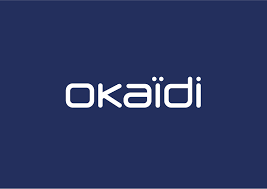 Les enseignes Oxybul et IDKids vont bientôt disparaître, remplacées par Okaïdi+ - 13/03/2024
Les enseignes Oxybul et IDKids vont bientôt disparaître, remplacées par Okaïdi+ - 13/03/2024
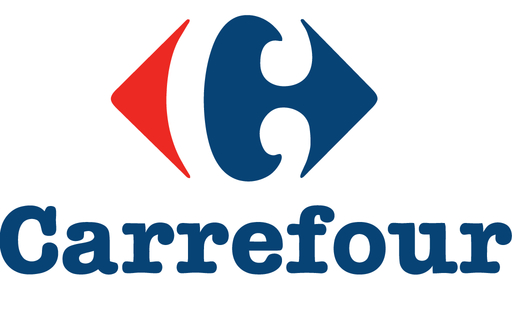 Carrefour a basculé dans le modèle plus dynamique de la franchise - 21/02/2024
Carrefour a basculé dans le modèle plus dynamique de la franchise - 21/02/2024
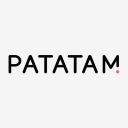 Liquidation du spécialiste de l'occasion Rediv (ex-Patatam) - 05/02/2024
Liquidation du spécialiste de l'occasion Rediv (ex-Patatam) - 05/02/2024


